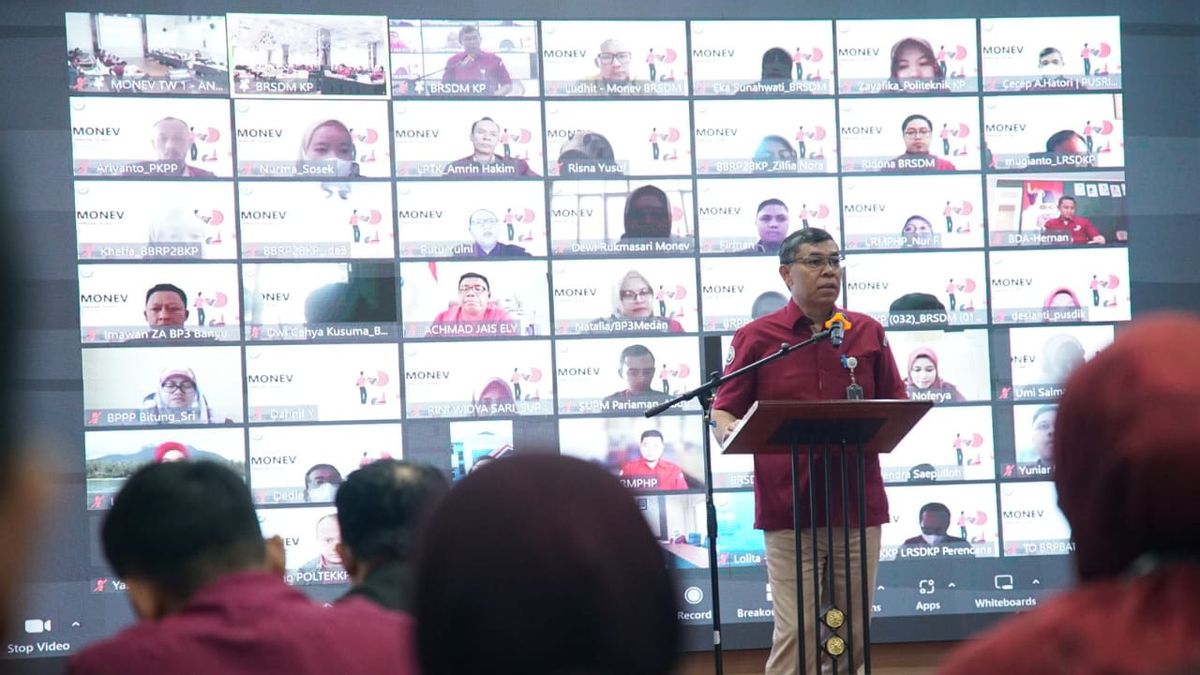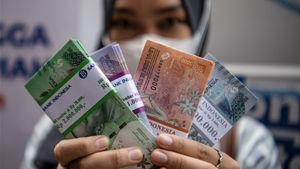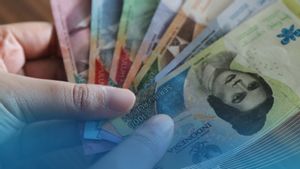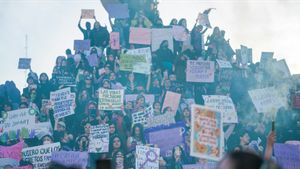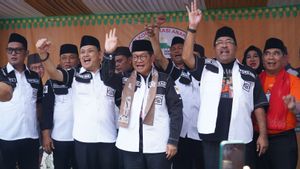JAKARTA - The Ministry of Maritime Affairs and Fisheries (KKP) is developing VOGA (Vocational Goes to Actors) and Smart Fisheries Village (SFV) programs as an effort to oversee the implementation of a blue economy-based priority program.
Through these two programs, KKP seeks to optimize the development and capacity of KP human resources.
"In supporting the KKP strategic program based on the blue economy, BRSDM has a strategic role in preparing superior, advanced, dynamic and global talent human resources," said Head of the Marine and Fisheries Research and Human Resources Agency (BRSDM) I Nyoman Radiarta in a written statement, Thursday, March 30.
Nyoman said that VOGA was carried out through the transformation of vocational education by the establishment of the Ocean Institute of Indonesia (OII), which is the merger of all higher education units in the marine and fisheries sector owned by the KKP with the main campus at the Jakarta AUP Polytechnic.
Then, revitalize training, marine and fisheries certification, and optimize the important role of extension workers.
Furthermore, said Nyoman, his party is also committed to providing 100 percent access to education for children who are the main fisheries actors (fishers, fish cultivators, fish processors, fish marketers, and salt farmers) as an effort to regenerate the main actors in the marine and fisheries sector.
"Especially at the Sidoarjo KP Polytechnic, by establishing it as an institution that implements the Financial Management of the Public Service Agency (PK BLU), the campus will be given a proportion of 80 percent for general channels and 20 percent for the main perpetrator's children, thus supporting the BLU predicate," he said.
For the second program, namely the development of Smart Fisheries Village (SFV), which is the concept of developing fishery villages based on information technology and management, is appropriate in order to increase the use of BMN and PNBP assets.
There are two concepts of SFV development, namely Village-based SFV and SFV based on the Technical Implementation Unit (UPT).
"The construction of SFV is not only carried out physically, but also in the social and institutional order, so that village competitiveness increases and there is an increase in human resource capacity," said Nyoman.
The integration/collaboration of education is carried out through the Teaching Factory (TEFA), training and modeling of extension workers, and the application of innovation. Nyoman said this was the strength of BRSDM in the development of SFV.
"Through this program, BRSDM targets an increase in the community's economy, as well as sustainable and environmentally friendly production activities," he concluded.
The English, Chinese, Japanese, Arabic, and French versions are automatically generated by the AI. So there may still be inaccuracies in translating, please always see Indonesian as our main language. (system supported by DigitalSiber.id)
